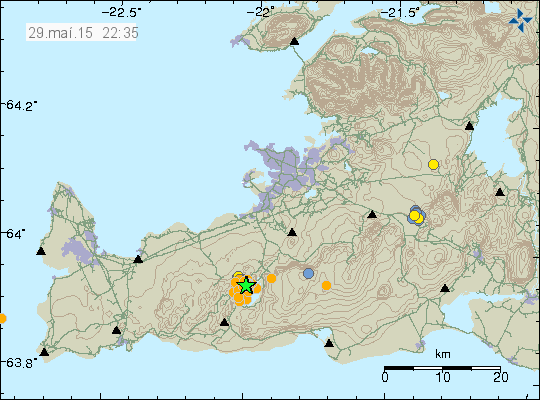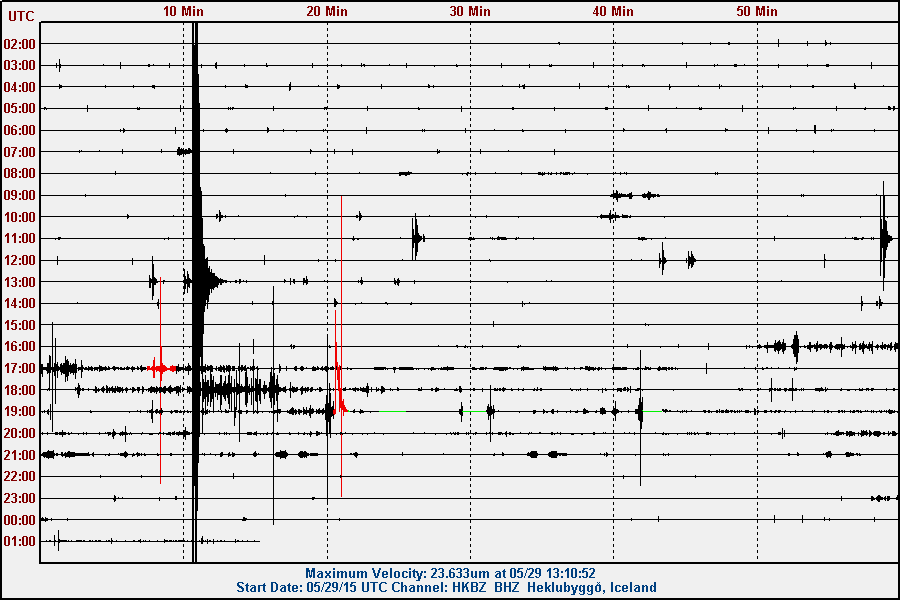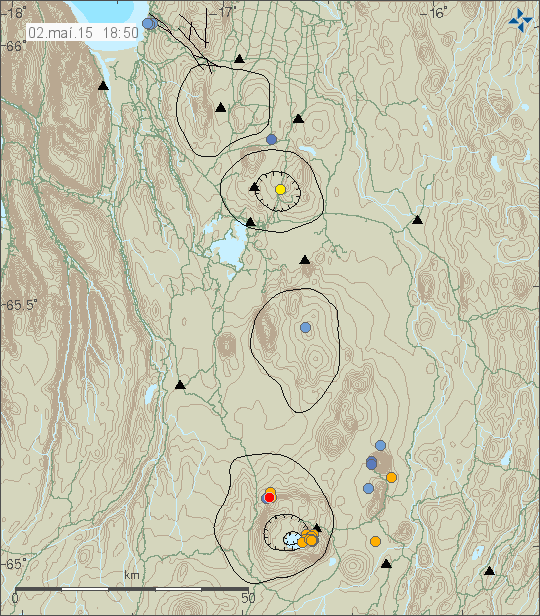Yesterday (29-May-2015) there was a strong earthquake swarm in Krýsuvík volcano. Largest earthquake had the magnitude of 4,0, a smaller magnitude 3,1 earthquake also took place.

Green star shows the location of the magnitude 3,1 and 4,0 earthquakes. Copyright of this image belongs to Icelandic Meteorological Office.
Other earthquakes in this swarm where smaller, total of 97 earthquakes where recorded. Earthquakes swarms in this area are common, since the volcano has been inflating and deflating for the past few years. I don’t know if this earthquake swarm was related to such movements, since tectonic forces often create strong earthquake swarms in this area and along the Reykjanes peninsula and Reykjanes ridge.

The earthquakes as they appeared on my geophone in Heklubyggð. This image is under Creative Commons licence. Please see CC Licence page for more details.
On the geophone shut-down
There has been some discussion about me turning off the geophone network in Iceland. There is one station renaming in Heklubyggð and that station is going to continue to run for some time now (it doesn’t use the 3G network in Iceland). When it turns off I do not know. Besides 3G connection costs that have been going up in Iceland for the past few years, it has also become more expensive for me to fix the computers if they fail, along with 3G signal leak and other issues. It is also time consuming to run a remote network. I do help people if asked on what to buy in terms of hardware if they want to start there own geophone or seismometer. I don’t plan on stop recording earthquakes, I just plan on doing that just from my home once I am back in Denmark.
As for sensitivity of such hardware, it depends on what type of hardware is being used. Geophones are good for local earthquakes but more sensitive hardware is needed to record earthquakes at longer distance, like the magnitude 6,8 earthquake in Alaska this morning. It can be viewed here for the next few hours on long period seismometer (the top one and few others).



